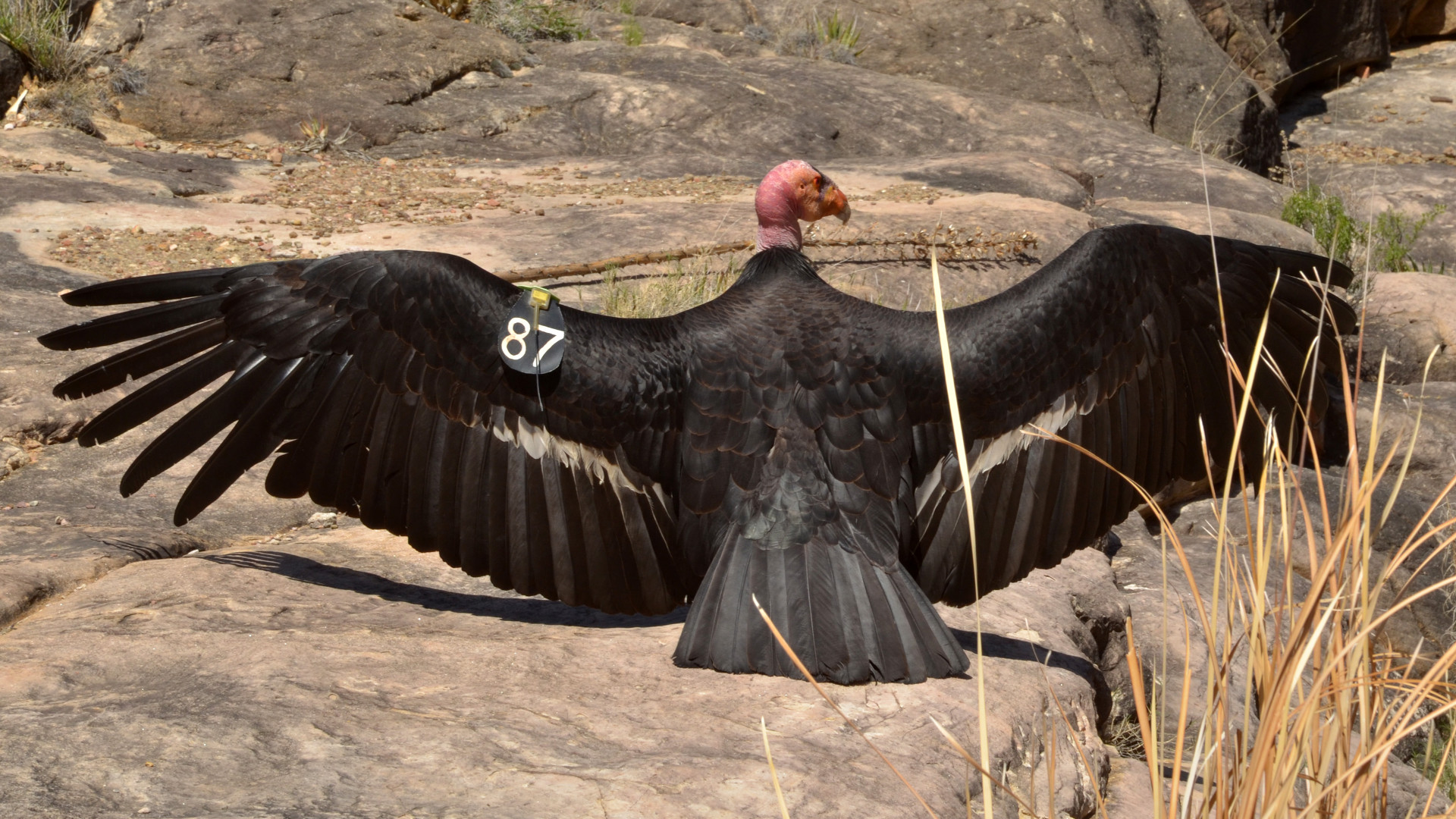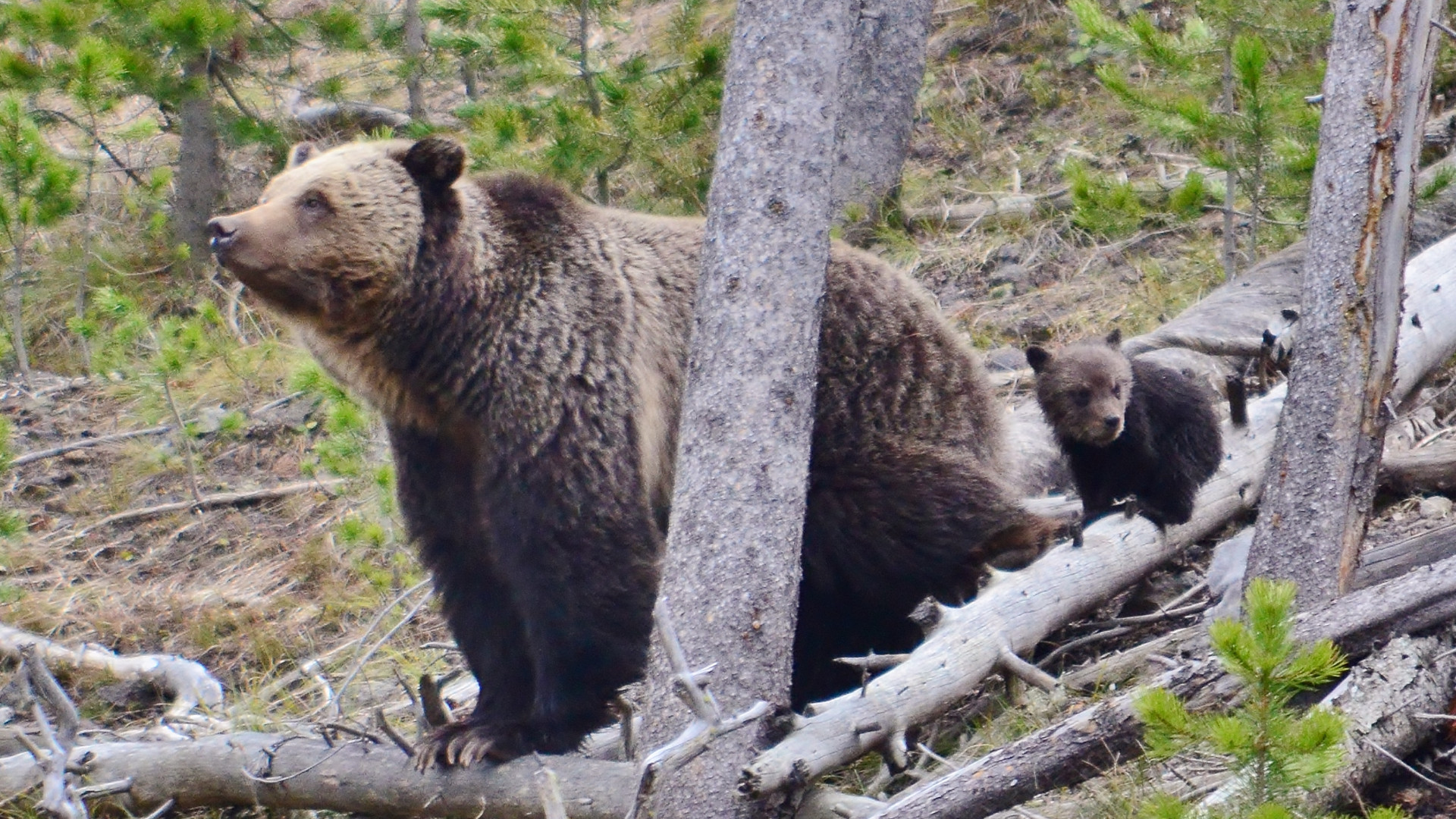It’s tradition to honor the past year’s human achievements. From peacemakers and scientists to athletes and artists, we celebrate those who inspire us. But what about the wildlife who surround us who make up the biodiversity that sustains us? Each year standout members of those populations also set records and push boundaries, many with lasting results.
Consider P-22, also known as the “Hollywood cat.” In 2012 this young mountain lion surprised biologists and captured hearts by establishing a decade-long residency in the Griffith Park area of Los Angeles. Stealthily threading through backyards and freeways, he demonstrated the value of landscape connectivity, even in urban areas. And though he died in 2022, he inspired a massive fundraising campaign that helped build the largest wildlife bridge in the United States, to be completed in 2025 over California’s 10-lane Highway 101. In this way he changed the world.
Other animal pioneers accomplished similarly remarkable feats in 2023. Ocelots, grizzlies and many more used their innate skills and courage to recover lost territory, expand their ranges, or simply survive against the odds. Some were helped by human actions like stream restoration, while others, like P-22, created opportunities to deepen scientific knowledge and inspire conservation.
Here are some of their stories.
Grizzlies Edge Toward the Plains
This year multiple media reports illustrated how young grizzly bears continue to disperse beyond present-day populations in Montana — even to the brink of the Great Plains. Last July, following years of rumors, biologists confirmed evidence of one or two grizzlies both north and south of Interstate 90 in south-central Montana. And in November, a trail cam 200 miles to the north captured a lone grizzly in the Missouri River Breaks region of north-central Montana. It’s the first confirmation of grizzlies in any of these near-plains areas since their extirpation more than a century ago.
View this post on Instagram
Grizzly bears knocking at the door of the Great Plains is a big deal. For most of the 20th century, western Montana hosted three isolated fragments of the West’s original grizzly bear population. Separated by vast distances and dangerous roads, the precarious holdouts centered around the Yaak River and Yellowstone and Glacier national parks, where the bears became associated with remote mountains. But before their extirpation, grizzlies had roamed the West’s deserts, coasts, forests and the Great Plains grasslands, where no one knows how far east they wandered.
Decades of intentional conservation serve as the backstory here. First, the 1973 Endangered Species Act mandated restoring grizzly habitat in the pockets where they survived. The work slowly helped grizzlies rebound, and today they increasingly tease crossing between recovery areas, long a holy grail of recovery efforts.
Second, changing attitudes and conservation outside of the recovery areas have laid groundwork for resumed human-grizzly cohabitation. For instance, the loner in the Missouri Breaks was on ranchlands owned by American Prairie, which since 2016 has restored habitat and introduced bear-friendly livestock practices.
And grizzlies aren’t the only creatures coming home again.
California’s Trendsetters
California was another scene of wildlife accomplishments last year. It started in May, when skiers aboard a Mammoth Mountain Ski Area gondola spotted a wolverine loping across a ski run. Lope turned to sprint as a skier, who likely never saw the animal, launched off a nearby jump. After additional reports, wildlife officials confirmed it was the first known wolverine in the region in 101 years. It’s the latest report of wolverines reoccupying historical ranges in California, Oregon, Washington and Alberta, Canada. The news came just in time for wolverines to finally make it onto the endangered species list after years of effort by conservationists.
Next, August brought news that wolves have established a pack in the southern Sierras for the first time in over a century. Genetic testing of scat found one of the females is a direct descendant of OR7, a young male disperser who in 2011 famously became the first wild wolf to enter California since the early 1900s. Ecologists believe conditions created by the 2021 Windy Fire influenced the new pack’s habitat selection.

Then, in September, six California condors repeatedly ventured north from their Pinnacles National Park homeland to Mount Diablo in the San Francisco Bay area, becoming the first condors seen in that area in over a century. Biologists speculate the sorties may indicate new nesting territories. Condors, who strongly favor undeveloped spaces, survive today because of a captive-breeding program and a California ban on hunting with leaded ammunition. Two of the Bay Area individuals had previously been treated for lead poisoning, while another was trapped to remove an aluminum can from his beak — a reminder of humans’ role in preserving this species.
The Pink Wave
Lots of birds survive hurricanes. But the flamingos who got sucked into Hurricane Idalia last August, and who then slingshot over 1,000 miles from their native Yucatan to the upper Midwest, deserve a special nod. Following the storm, dozens of them turned up in wetlands around Pennsylvania, Ohio and Wisconsin. By fall they appeared ready to migrate back south.
And while surviving a hurricane that throws you across the continent is noteworthy, there’s a deeper story. In 2018 a lone flamingo turned up in north Florida — well north of its current range — following Hurricane Michael. He’s still there, delighting birders who have nicknamed him Pinky. And before Pinky, Hurricane Allison in 1995 and Hurricane Agnes in 1972 also appear to have temporarily swept flamingos into north Florida. Like Idalia, the storms passed Cuba and the Yucatan, where the birds are abundant. The question now is whether last year’s wayward waders will return to Mexico or, like Pinky, settle into Florida — perhaps offering Pinky a mate.
If they choose the sunshine state, where they are rarely seen north of Tampa Bay, they could reclaim habitat that has been missing flamingos since the plumage trade of the early 1900s wiped them out.
Lil’ Jefe of the Borderlands
The ocelot caught on a game cam in Arizona’s Huachuca Mountains on July 4 is as much of a trooper as P-22. But instead of urban obstacles, this feline overcame ranchlands, roads, mining activities, USDA poison traps, and an increasingly fortified border wall, which has brought additional roads and deforestation. Nicknamed Lil’ Jefe — a nod to the famous jaguar known from the same region — his presence shows the habitat potential of the Sky Islands region but highlights the threats to wildlife from the growing wall.
Fewer than 100 ocelots may remain in the United States, mostly in Texas. Their U.S. population is the northern reach of a range that stretches south to Argentina. Biologists believe Lil’ Jefe, who was spotted just five miles north of the border, has appeared on game cams over 150 times since 2012. He’s the only known ocelot in Arizona and one of only five — all males — seen in the state since 2009. He likely dispersed from northern Mexico, a place he can’t return to and that others can’t migrate from, due to the wall.
Game cameras in the Sky Islands have also picked up ringtails, mountain lions, black bears and others, an indication of the region’s enormous potential and need for protection.
Honorable Mentions: A Hellbender Dad, Recovered Darter, and Marathon Beluga
On a human-dominated landscape, sometimes simply reproducing is a bold achievement. So cheers to the endangered Ozark hellbender dad who in 2023 became the first captive-bred giant salamander known to reproduce in the wild. Raised at the Saint Louis Zoo, he was collected as an egg in 2013 and released near Missouri’s Current River in 2019.
Congratulations to the Okaloosa darter, a small, green-yellow fish who graduated in 2023 from the Endangered Species List. The darter was listed in 1973 and its recovery was aided by conservation work at Florida’s Eglin Air Force Base.
And welcome back to the extremely rare frosted elfin caterpillar, who turned up in abundance among wildflowers in the Montague Plains of western Massachusetts. The nonmigratory species suffers from decades of habitat loss, but officials credit the new population to habitat restoration that has also brought back whip-poor-wills, turkey, deer, and black bear.
And the beluga whale that swam over 500 miles up Alaska’s Yukon River gets recognition for showing that sometimes wildlife enjoy exploration as much as we do.
These mostly cheery tales do not reverse today’s sobering news on climate and biodiversity. But they do highlight both the resiliency of wildlife and the promise of conservation work.
For instance, the 1973 Endangered Species Act — which celebrated its 50th anniversary last month — provides critical protections for grizzlies, wolves, darters, and others. But the law wouldn’t amount to much if it weren’t for the hard conservation work conducted by dedicated humans, including pulling cans off condor beaks or restoring prairies and wetlands.
Technology helps, too. Hellbenders released into the wild, for instance, carry chips that biologists use to check on their wellbeing, while game cameras and genetic testing help document the advances of ocelots and others.
Even as wildlife around the world continues to face perilous and unprecedented declines, we can expect this blend of legal protections, human effort, and technology breed more encouraging stories in the year ahead.
![]()


